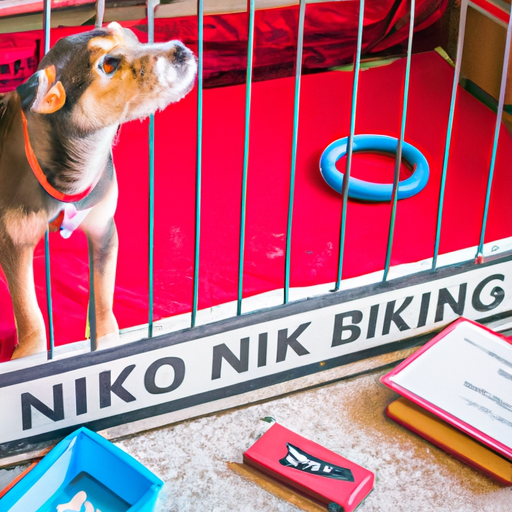If you’re a dog parent dealing with incessant barking from your furry friend while they’re in the crate, you’re not alone. This guide will help you understand why your dog may be barking in the crate and provide actionable steps to help them feel more comfortable and quiet.
Understanding Why Dogs Bark in the Crate
Before you can effectively curb your dog’s crate barking, it’s important to understand why they might be doing it. Here are some common reasons:
- Separation Anxiety: Dogs are social animals, and being separated from their human companions can cause anxiety.
- Boredom: Dogs need mental and physical stimulation. If they’re not getting enough, they might bark to express their frustration.
- Lack of Crate Training: If your dog isn’t used to the crate, they might feel uncomfortable and bark as a result.
Implementing a Proper Crate Training
A well-executed crate training plan can significantly reduce your dog’s barking. Here are some steps you can follow:
- Make the Crate Comfortable: A comfy bed, favorite toys, and familiar scents can make the crate feel more inviting.
- Gradual Introduction: Start by leaving your dog in the crate for short periods while you’re home, gradually increasing the duration.
- Positive Reinforcement: Praise your dog and give them treats when they stay quiet in the crate.
Keeping Your Dog Physically and Mentally Stimulated
Prevent boredom-induced barking by keeping your dog busy and active.
- Regular Exercise: Make sure your dog gets plenty of physical activity throughout the day.
- Mental Stimulation: Puzzle toys and training sessions can help keep your dog’s mind busy.
- Social Interaction: Arrange playdates with other dogs, or consider doggy daycare if you’re away for long periods.
Ensuring Your Dog’s Needs are Met
Sometimes, dogs bark in the crate because they need something. Ensure that these needs are met before crating:
- Sufficient Food and Water: Your dog should be well-fed and hydrated before being crated.
- Bathroom Breaks: Make sure your dog has had a chance to relieve themselves before crate time.
Using Calming Aids
Calming aids can help soothe anxious dogs. These can include:
- Pheromone Diffusers: These mimic the calming pheromones mother dogs produce to comfort their puppies.
- Calming Music: Some dogs respond well to soothing sounds.
- Pressure Wraps: These work by applying gentle pressure to your dog’s body, creating a calming effect.
Consulting with a Professional
If your dog’s crate barking persists despite your best efforts, it may be time to consult with a professional. Veterinarians, dog trainers, and animal behaviorists can provide invaluable insights and strategies.
FAQ
-
How long should I leave my dog in the crate?
The length of time can vary depending on your dog’s age and condition. Puppies should spend less time in the crate than adult dogs. If you’re unsure, consult with a vet. -
What if my dog still barks even after exercise and mental stimulation?
This could indicate that your dog might be dealing with separation anxiety or other issues. It’s best to consult with a professional. -
Can I use a bark collar to stop my dog’s crate barking?
While bark collars can deter barking, they don’t address the underlying causes. It’s always preferable to understand and address the root cause of the barking. -
What if my dog is destructive in the crate?
Destructive behavior could be a sign of anxiety or boredom. Try providing mental stimulation and consult with a professional if needed.
With patience, understanding, and consistent training, it’s entirely possible to curb your dog’s crate barking. Remember, every dog is unique, so be patient and flexible in your approach. Good luck, and happy training!



